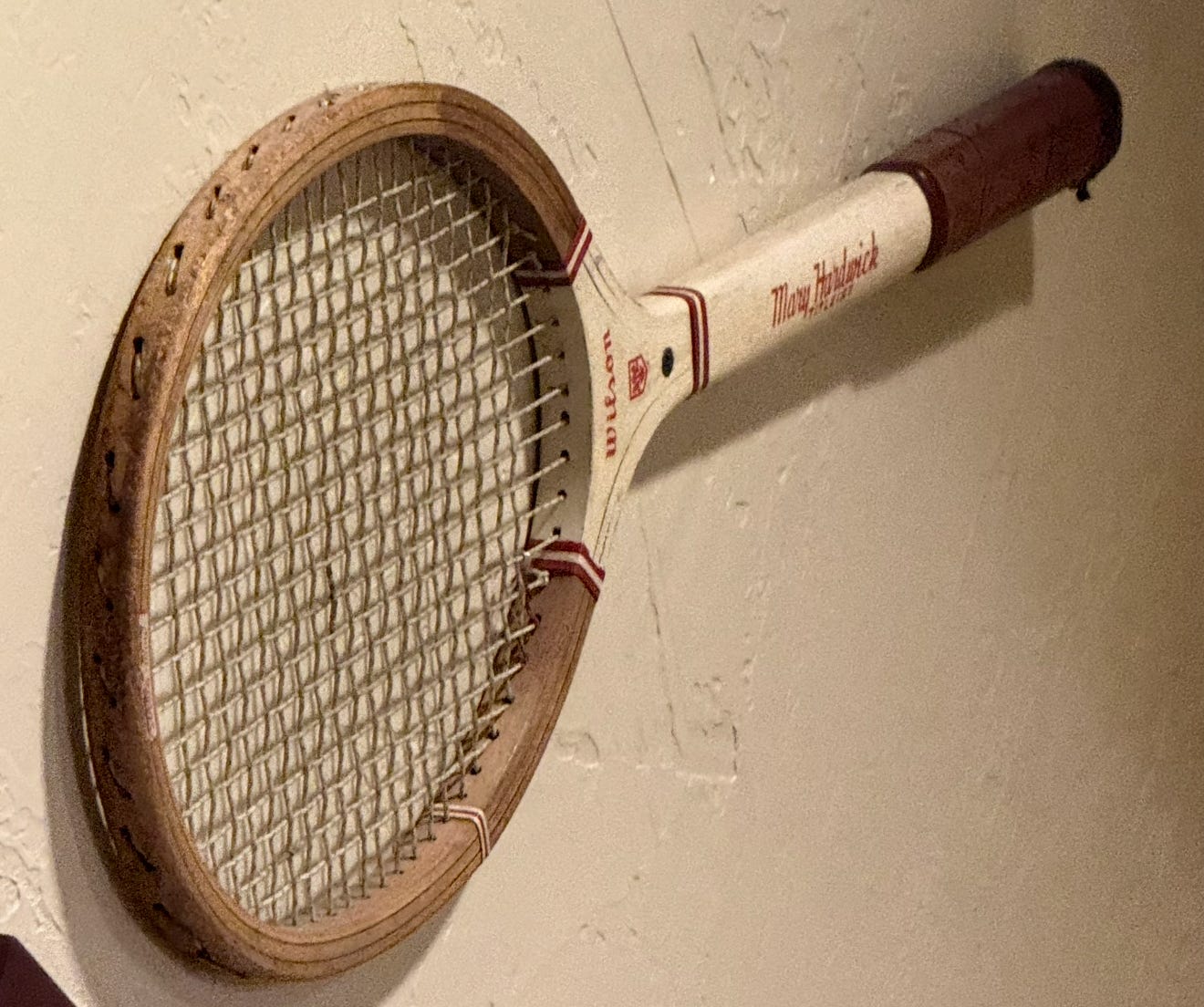I PULLED OFF THE HIGHWAY in small-town central Pennsylvania today for lunch, and the place I chose — a go-to stopover for me because of its reasonable prices, good food and ample salad bar — was absolutely packed on a Sunday afternoon. Because of this, I was seated in the back corner of a section I’d never had occasion to see before.
This breed of establishment is common across the American landscape these days. Its walls are festooned with pieces of our yesterdays that are designed to evoke a calmer, more agrarian, more manageable America.
You’ve seen them for years on the walls of places like Ground Round, TGI Fridays and Cracker Barrel — items like vintage (or simulated vintage) root-beer ads, feed-store signs, sports equipment, somber family portraits unanchored from their origins, manual farm implements with just enough rust to suggest they had a life somewhere outdoors decades before any of us were born. Somewhere in Massachusetts, there’s even a warehouse of this stuff, culled from flea markets and estate sales and sold to restaurants that want to cultivate this kind of Americana sensibility.
This particular outpost of a popular regional chain also features smatterings of local sports memorabilia, which helps ground the place in the area where it’s located.
Today, though, as I sat working on my salad-bar mac and cheese and eagerly awaited my sirloin steak and mushrooms, I looked up and saw something that jarred me. Pinned to the wall, looming above a family eating their Sunday meal, was a pair of old crutches.
My first thought was that my eyes were misreading what I was seeing. This must be something different, some arcane farm implement that I, an avowed child of the suburbs, was not parsing or understanding. But I asked and received confirmation: These were indeed crutches, though their provenance was unclear.
MY HEAD BUZZED with the implications. Who used these? What happened to them? Were the crutches temporary or were they used by someone who grappled with a painful disability for a lifetime? Most of all, what was the rationale behind curating these particular items to summon an American past?
I’ve long been suspicious of endeavors that sanitize the past. We summon the 1950s with diners and sock hops, the 1960s with purple-tinted sunglasses and tie-dye, the 1970s with leisure suits and pet rocks and brownish earth tones. This reductivism, while fun in the moment, reduces history to anecdote and can crowd out the genuine horrors and challenges of each decade (i.e., nuclear terror, brutal racism and a fundamentally shifting economy respectively). It might be fun to surf the past, sure. But to actually understand it, you have to saturate yourself — in the good and the bad.
I get it, though. American yesterdays are fertile fodder for whatever story a business might seek to tell, and slivers of the story are often used — reasonably — to sell things and evoke pleasant memories. Cracker Barrel does this perhaps most adeptly, with its penny candy and old-style soda pops featured in a “country store” that you must traverse en route to eating your meal under someone’s forgotten ancestors and old flour signs.
But when you include random implements of misery among the treasures, I become unsure of what it’s trying to say. I even did a bit of digging to see if, say, this particular region of Pennsylvania was known for making crutches or medical supplies, but I found no evidence of that. If you know differently, or if there’s a different interpretation of this, call me out.
During my senior year of college, 35 years ago, an old hospital near Penn State was closing down and selling off everything in its basements and storerooms. I went out to the fire sale to look for old typewriters, and found them. I also found a 1920s-era pediatric wheelchair made of wood and woven bamboo. It was both compelling and horrifying, and I bought it and kept it in my apartment for years.
I regret that deeply now. Who knows what child — or children — endured miseries and struggles in that piece of unfortunate furniture? And I turned it into a conversation piece. I still cringe when I think about that purchase, though I will say that every time I looked at it, I was reminded that we were not always as advanced as we eventually became when it came to wheelchairs.
I had the same reflexive cringe today when I looked up at the wall and saw these crutches. Like many things that contain past lives, they spoke of misery and — at the least — pain and inconveniences past. And I wondered: What became of the person who tucked them into each armpit and tried to move forward? How did they come to be here?
Then my sirloin steak arrived. As usual, it was excellent. Afterward, I got up from the table and walked out on the power of my own legs. No help needed.






